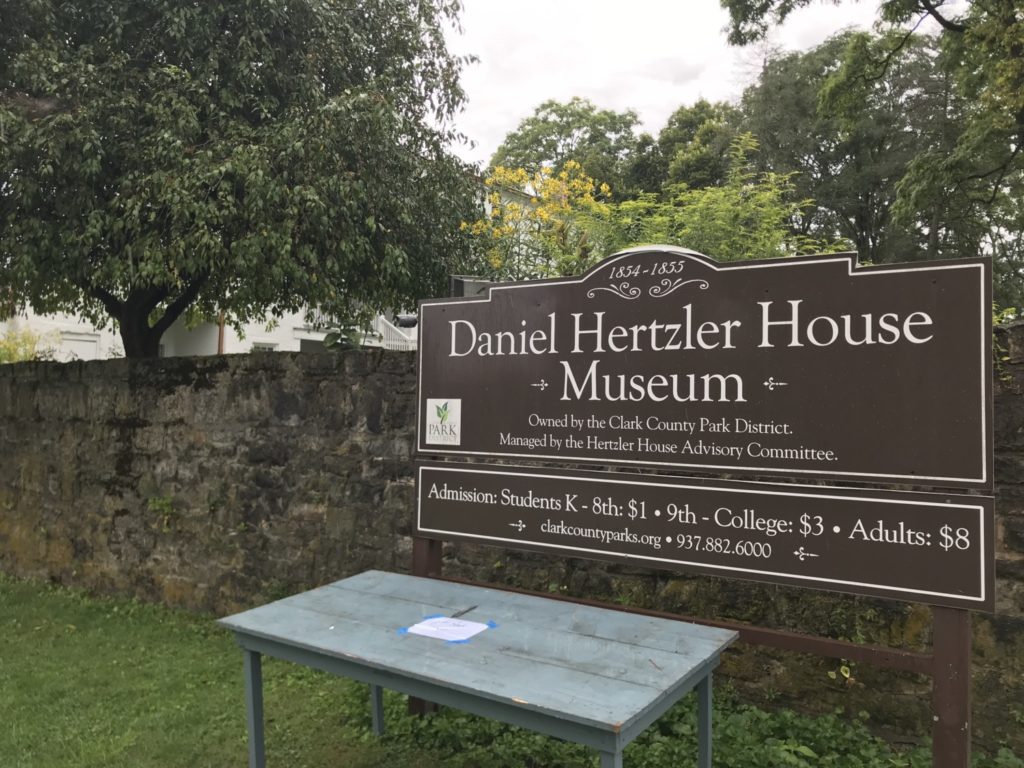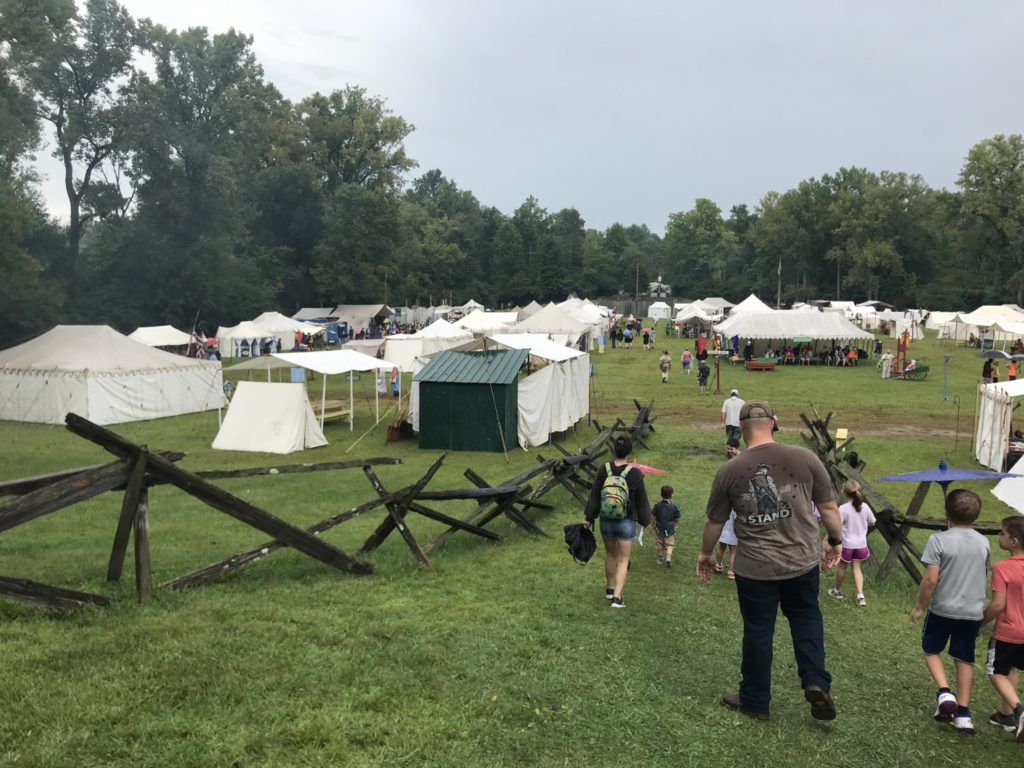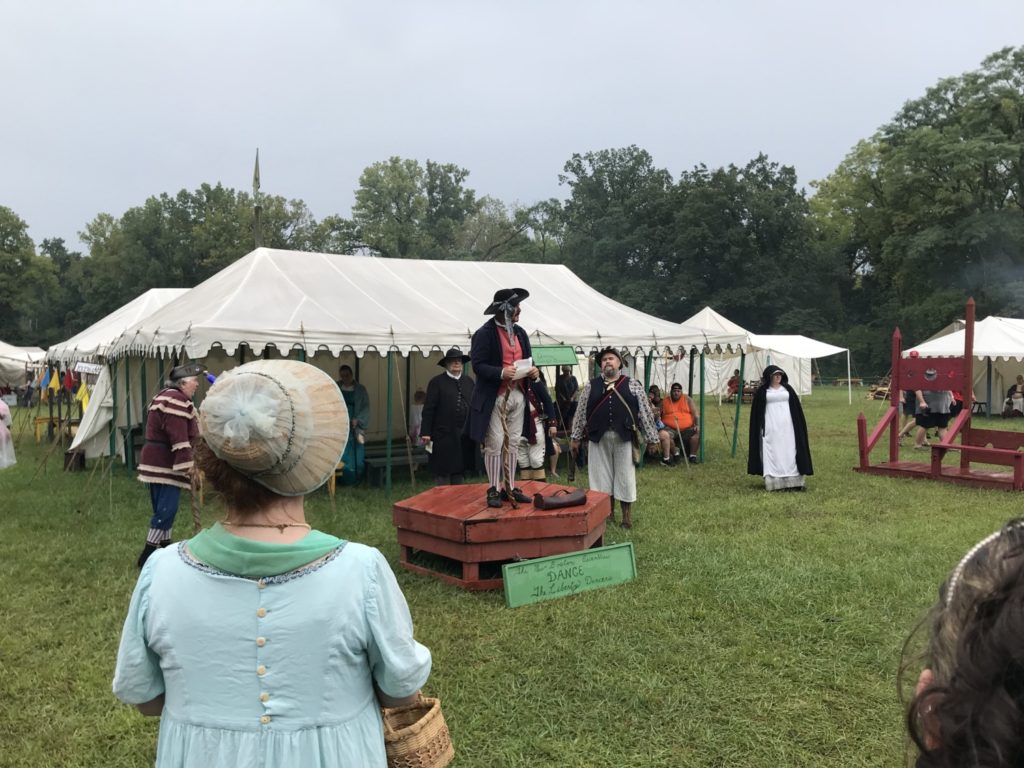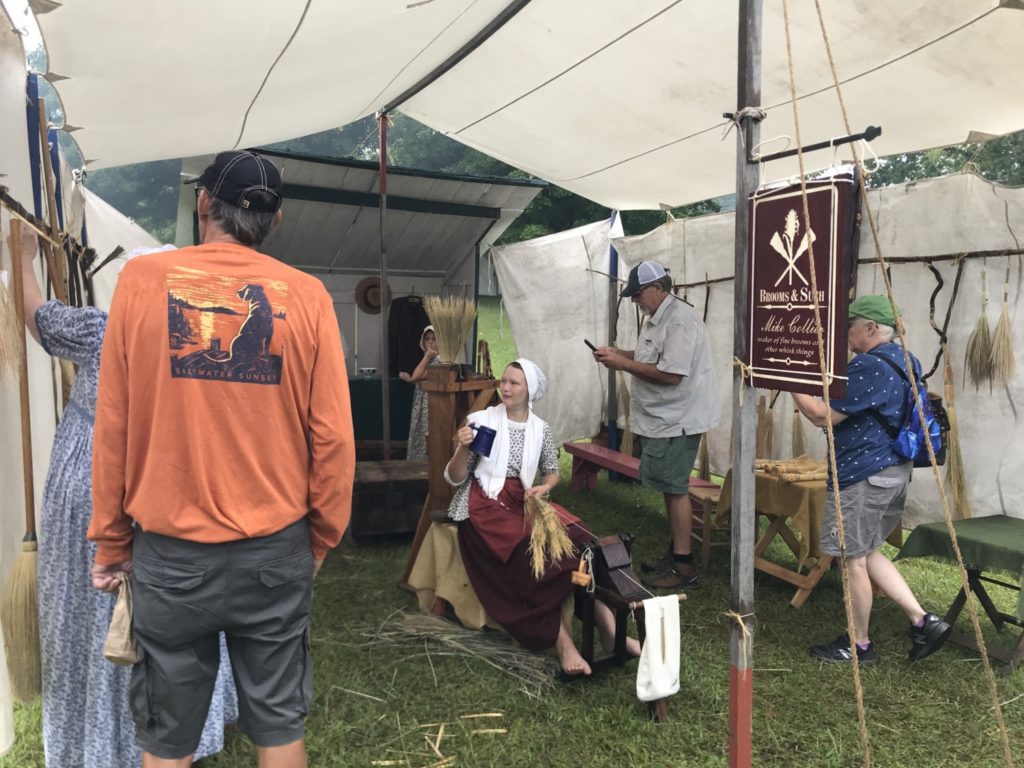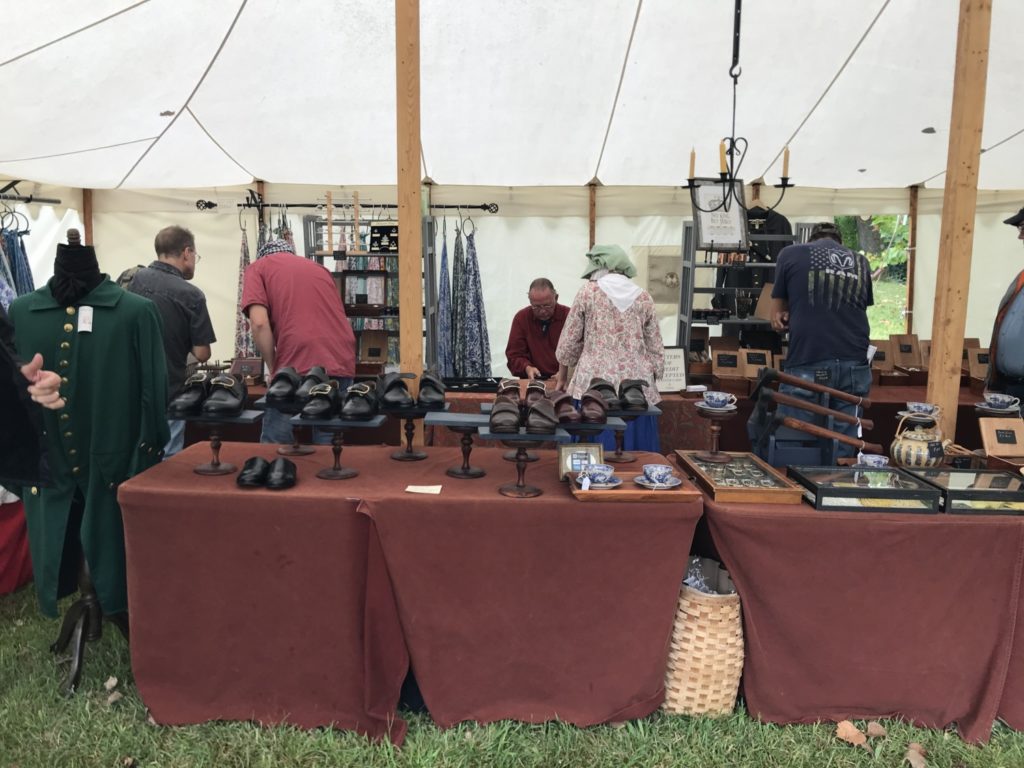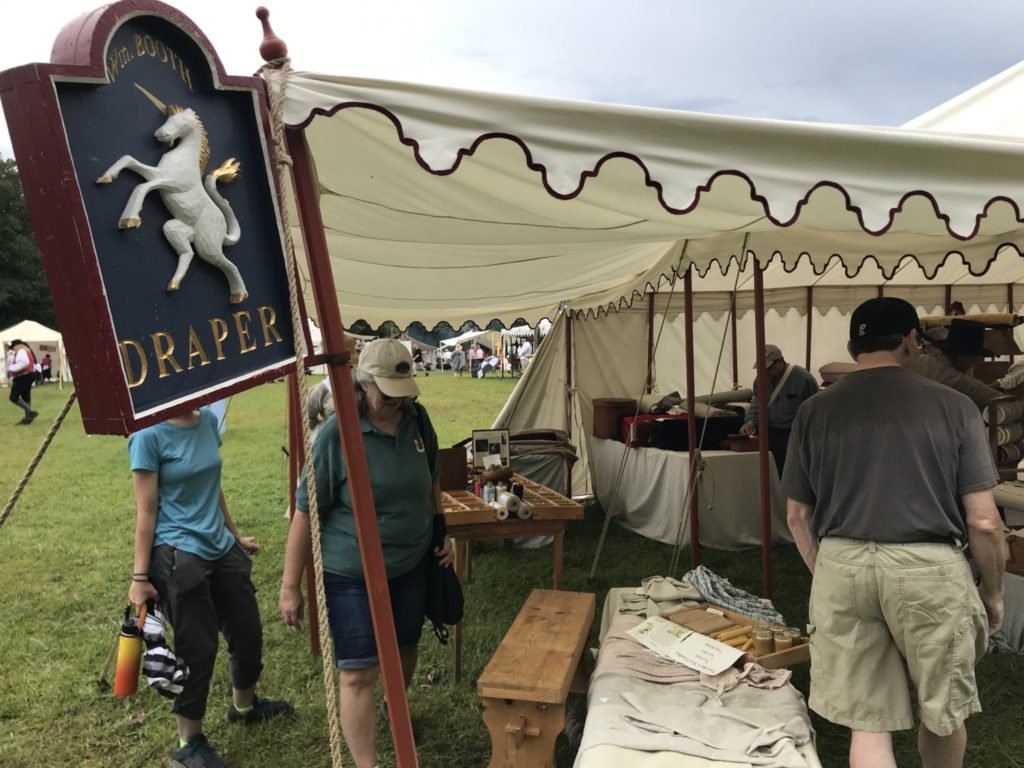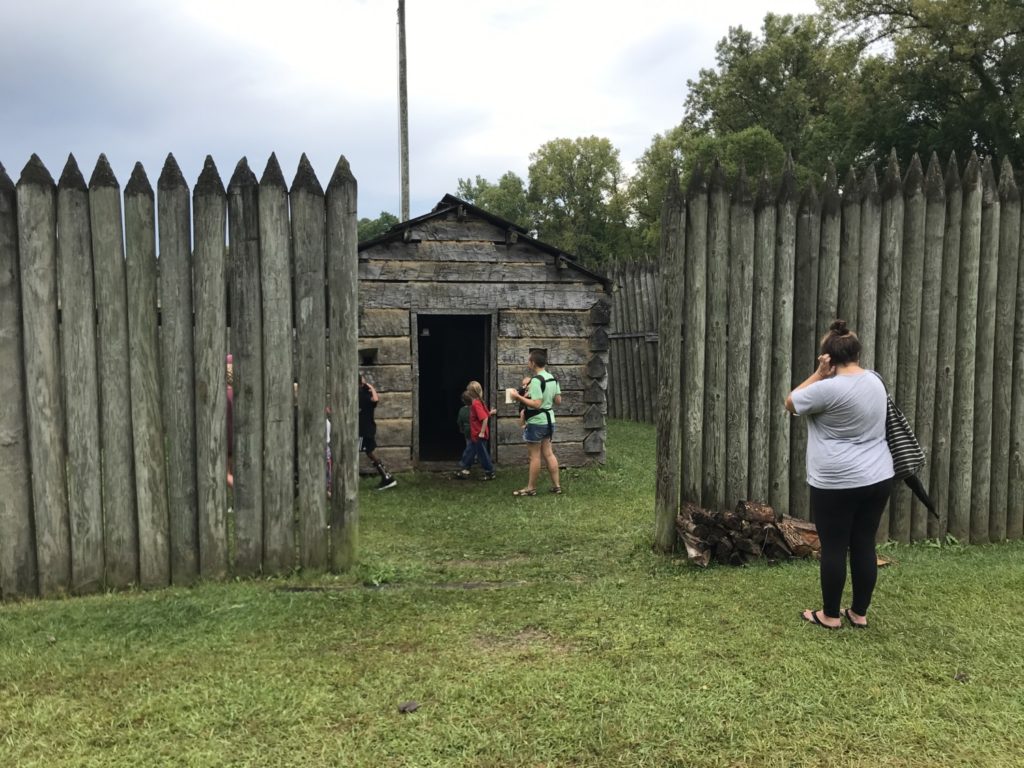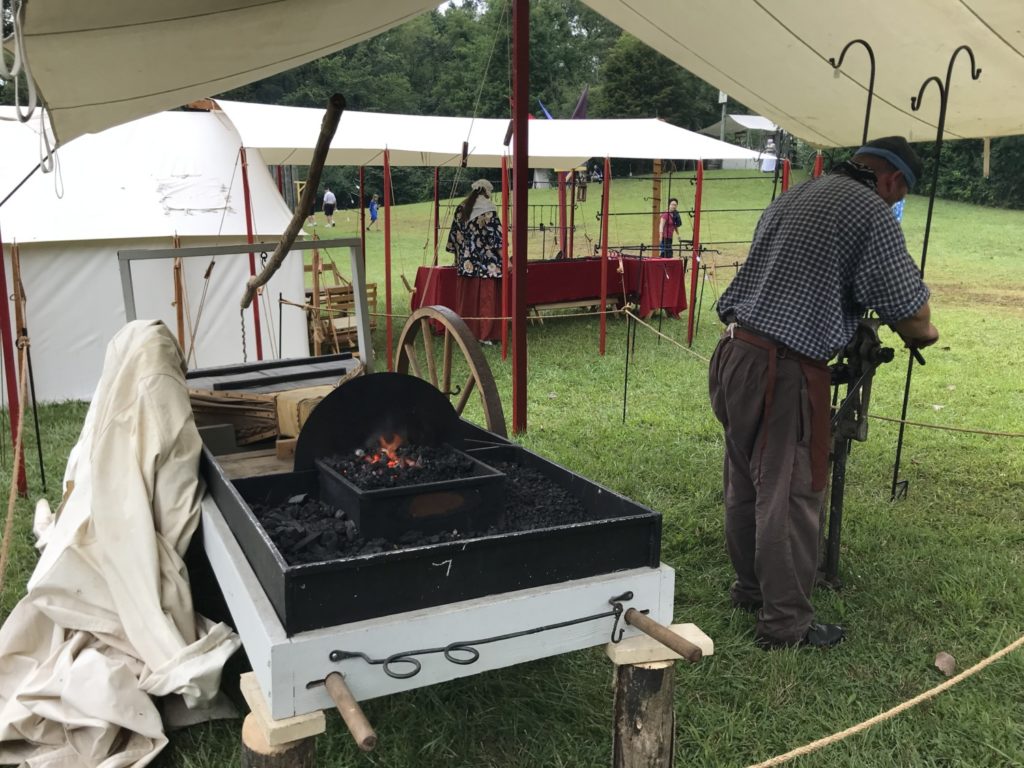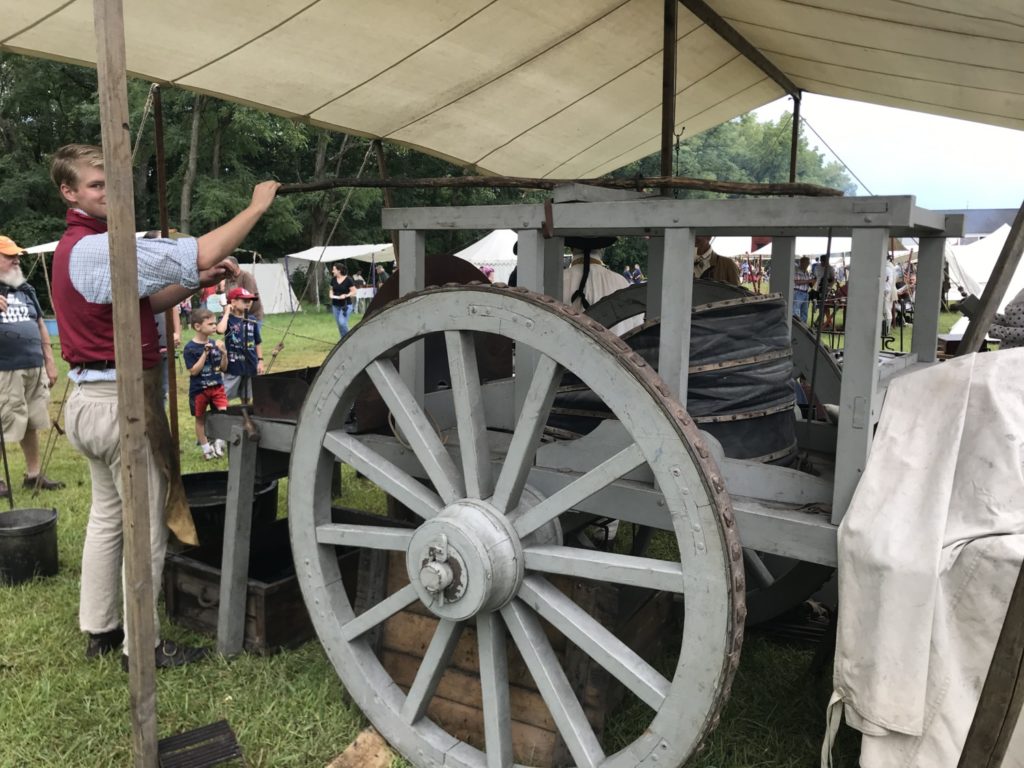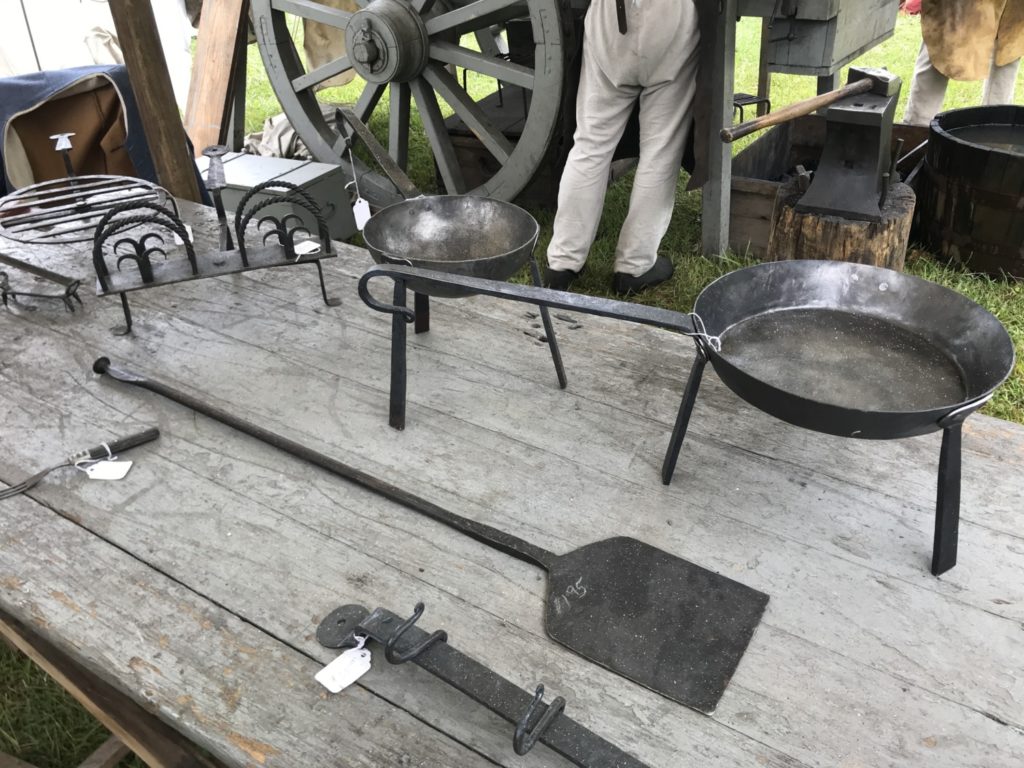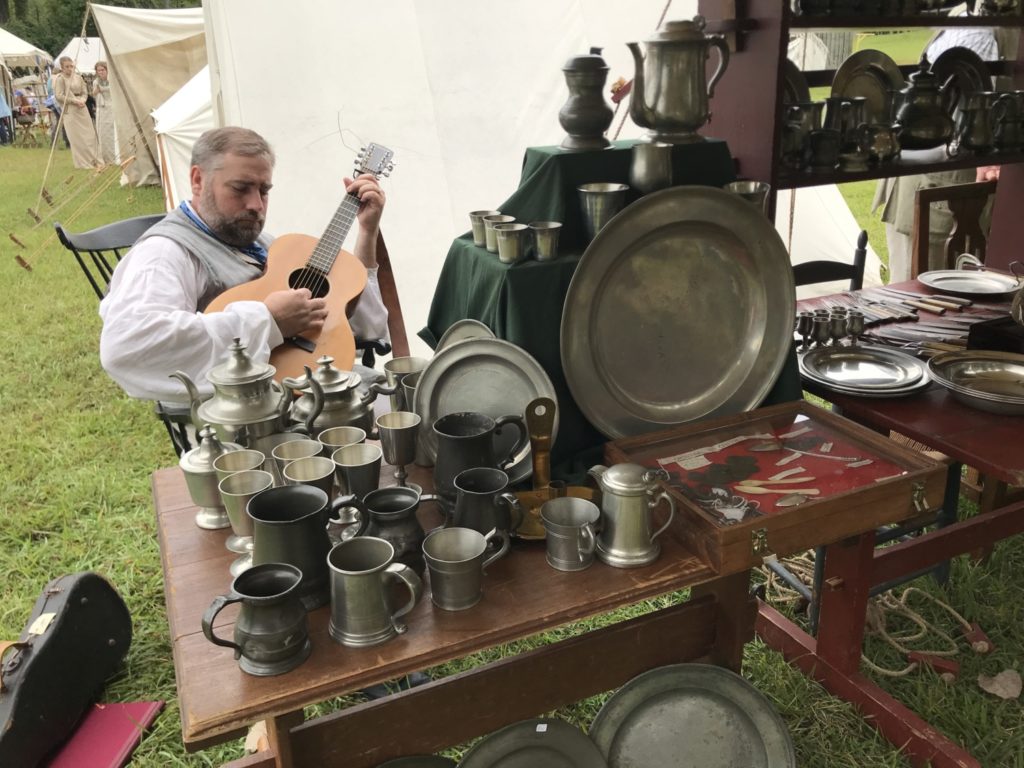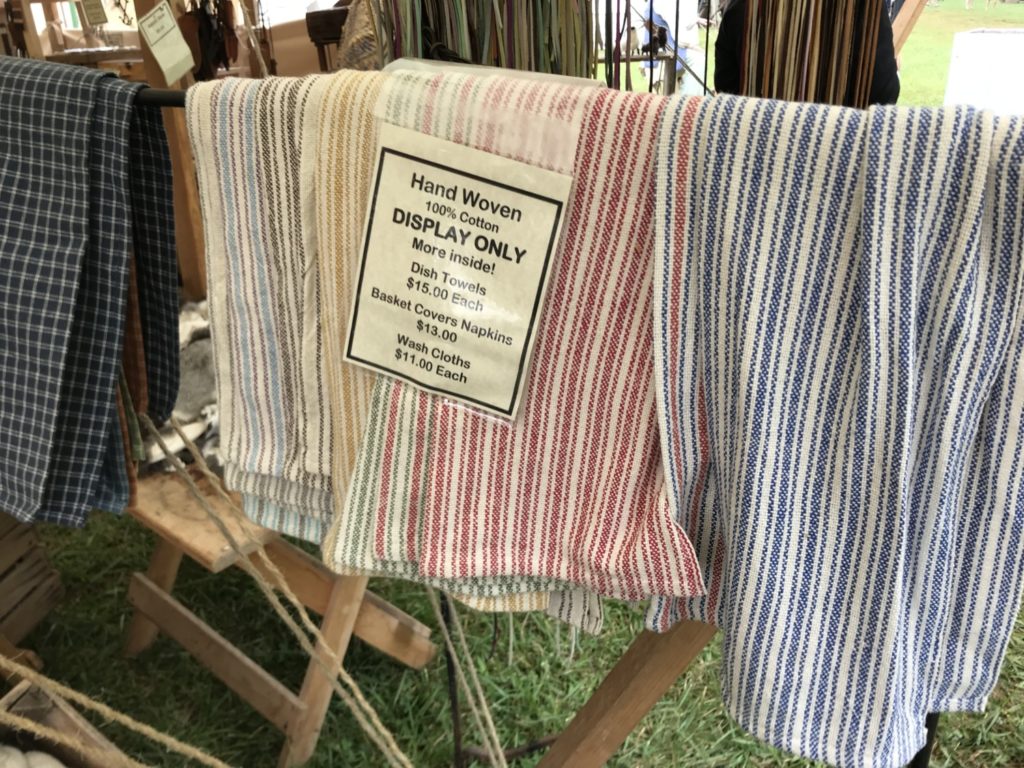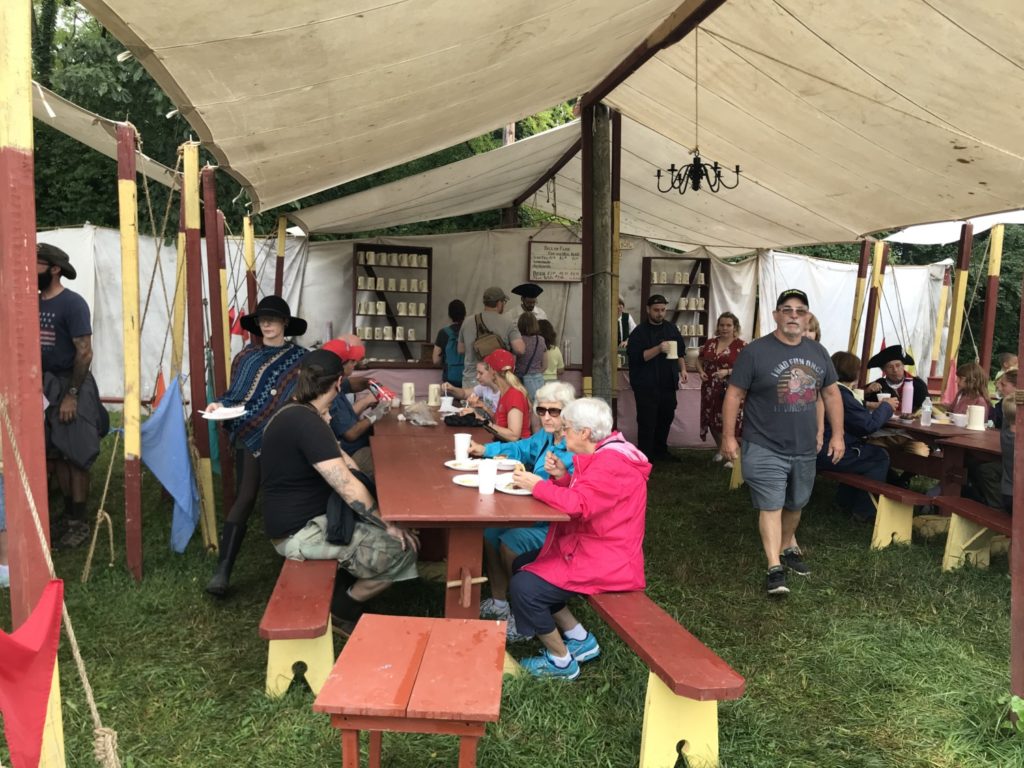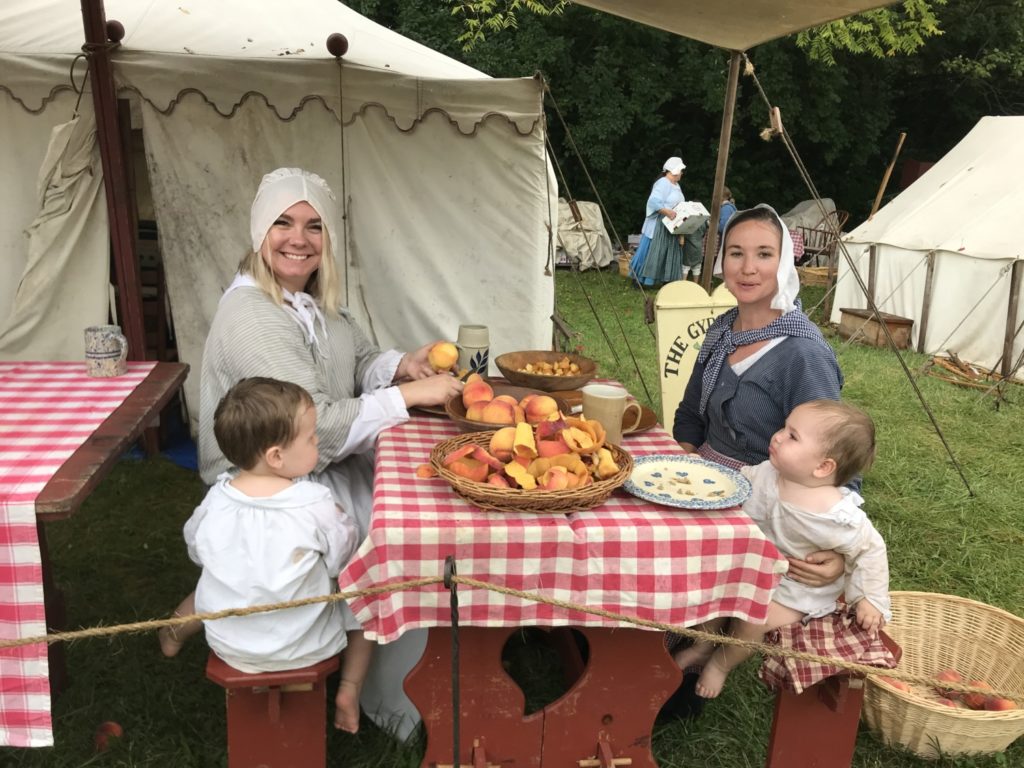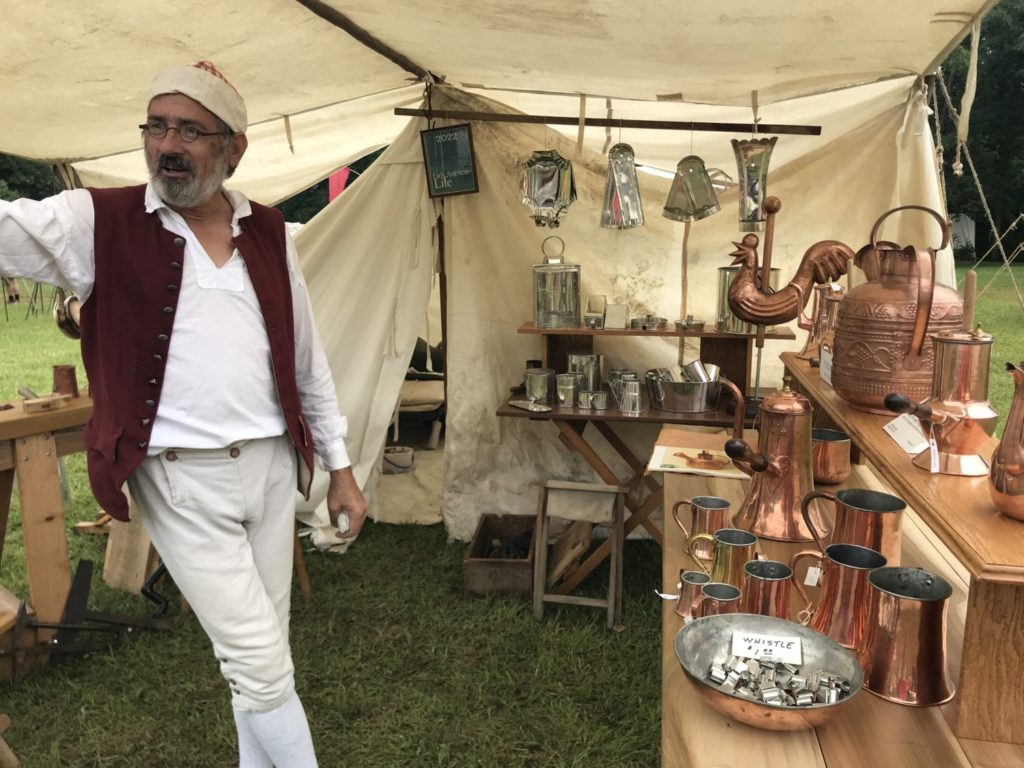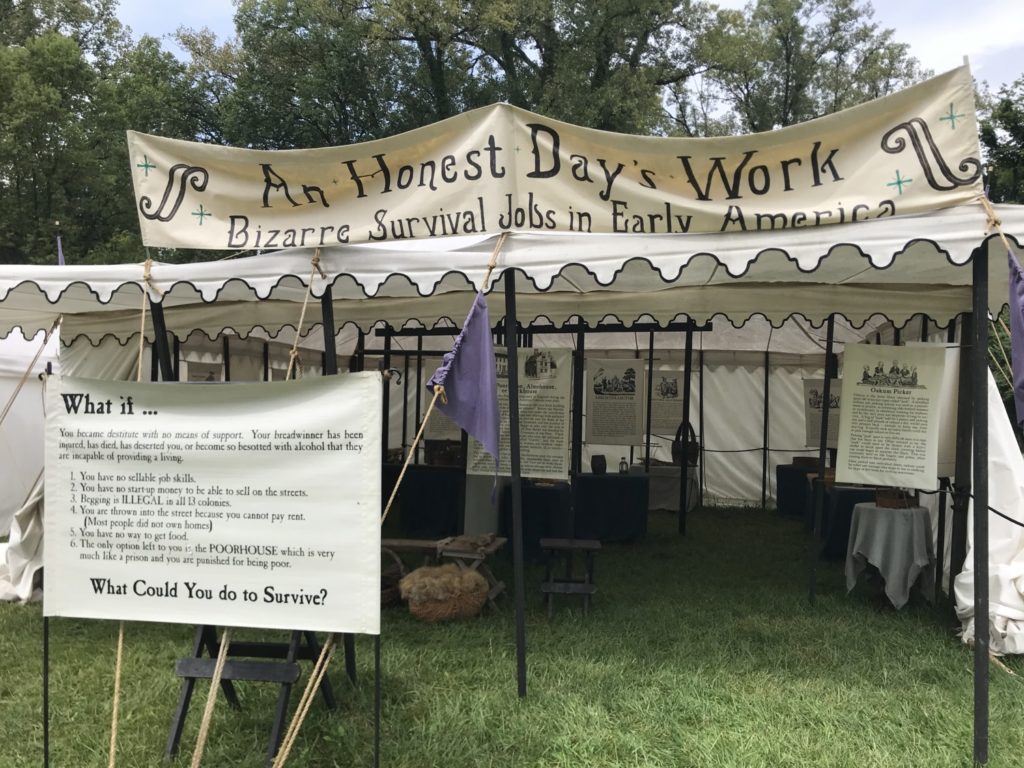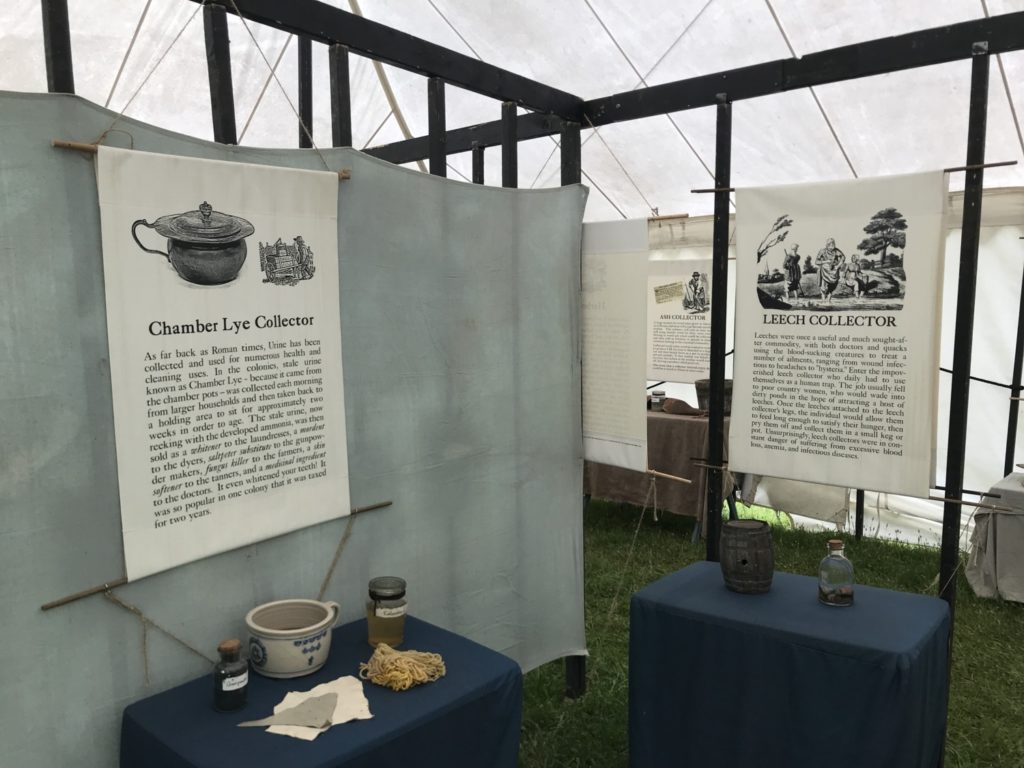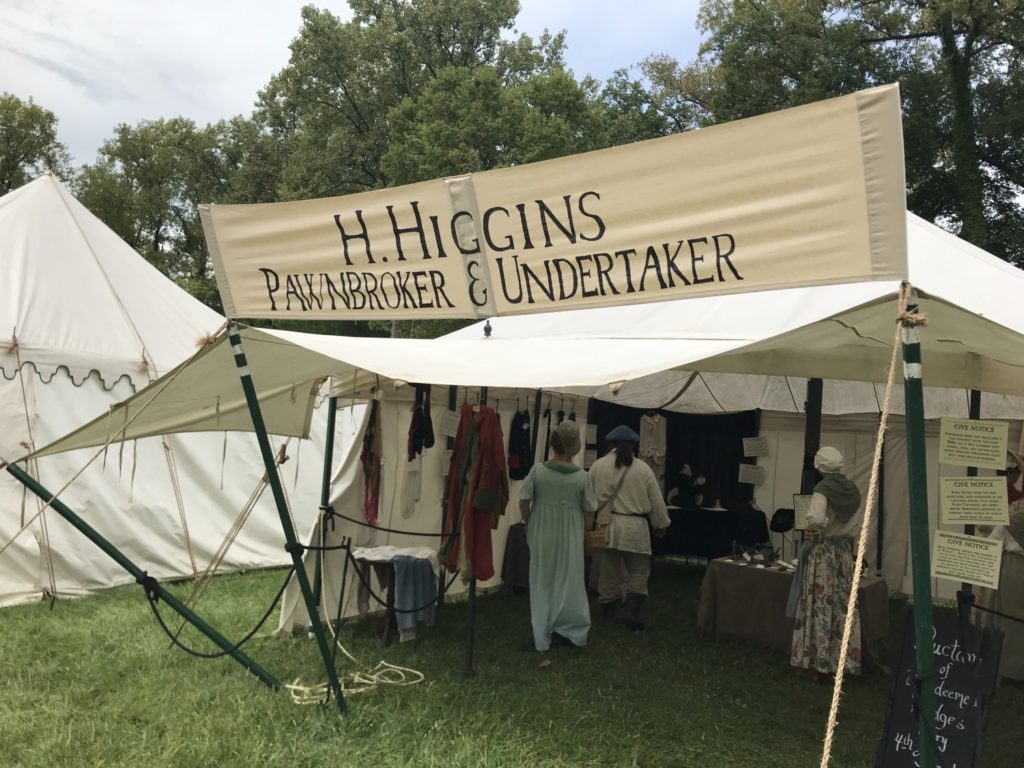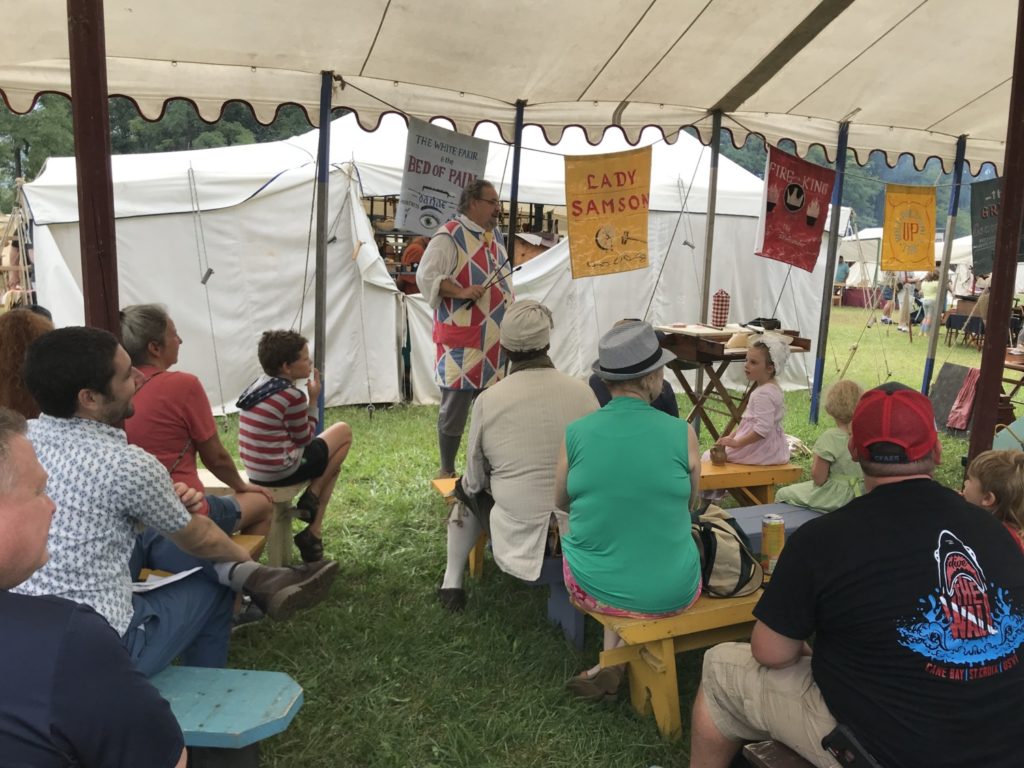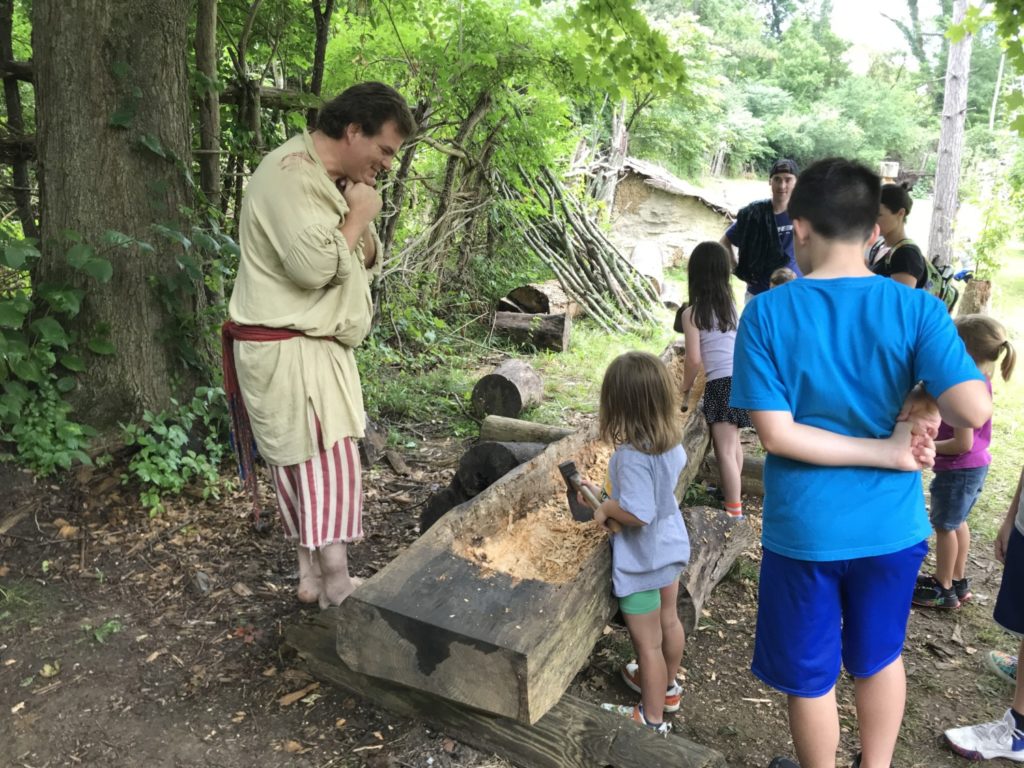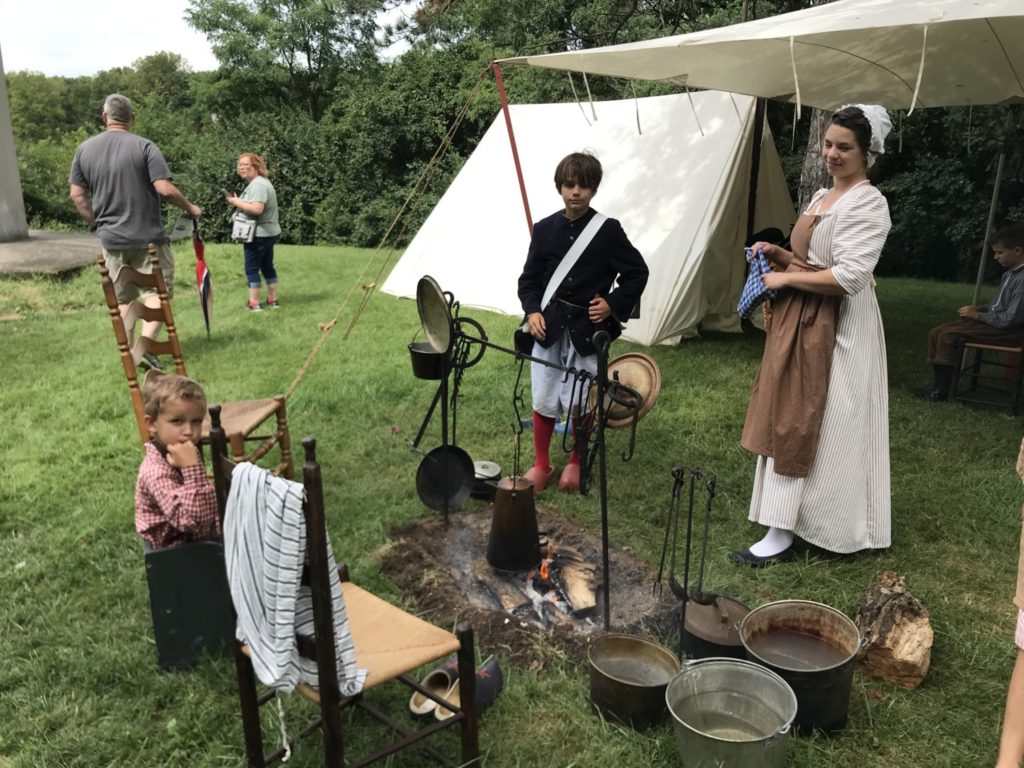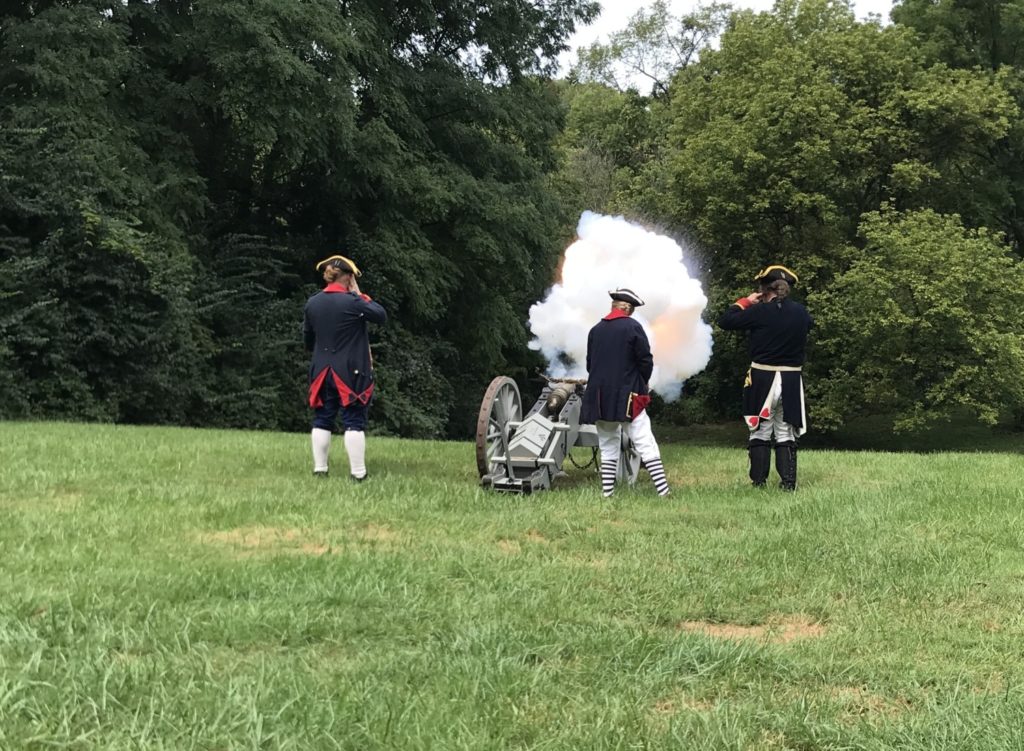Tom, John and I attended the Fair at New Boston on the very rainy Saturday of Labor Day weekend. Several of our coworkers at Slate Run Living History Farm suggested we attend and we were glad to oblige. When I retired, I envisioned attending lots of fairs and festivals. When we work in the National Parks, however, we are usually working on the weekends. And, since Covid-19, we have been avoiding crowds. So far this year we have attended one Farmer’s Market and the Ohio State Fair. Consequently, I was eager to attend the Fair at New Boston to check it out.
2022 was the 40th anniversary of the Fair at New Boston which is an annual living history event sponsored by the George Rogers Clark Association. It is held in George Rogers Clark Park, a county park just outside Springfield. I’m not sure why it is called the Fair at New Boston, because New Boston is a town on the Ohio River near Portsmouth. The fair this year, as well as being the anniversary, was the return to a “normal” fair after the pandemic.
We arrived at George Rogers Clark Park about 11 a.m. on Saturday. We had driven through a thunderstorm to get there, and it was still raining lightly when we arrived. According to the radar, however, we had several hours before the rain would return. Because of the thunderstorm, we arrived as the fair began the opening ceremonies. There was a small parade of “townspeople,” militia, and rangers. The setting is 1790-1810, to correspond to the founding of Ohio. I was impressed by the number of people dressed in period clothing. Not only did they look good, they also spoke in the style of that day.
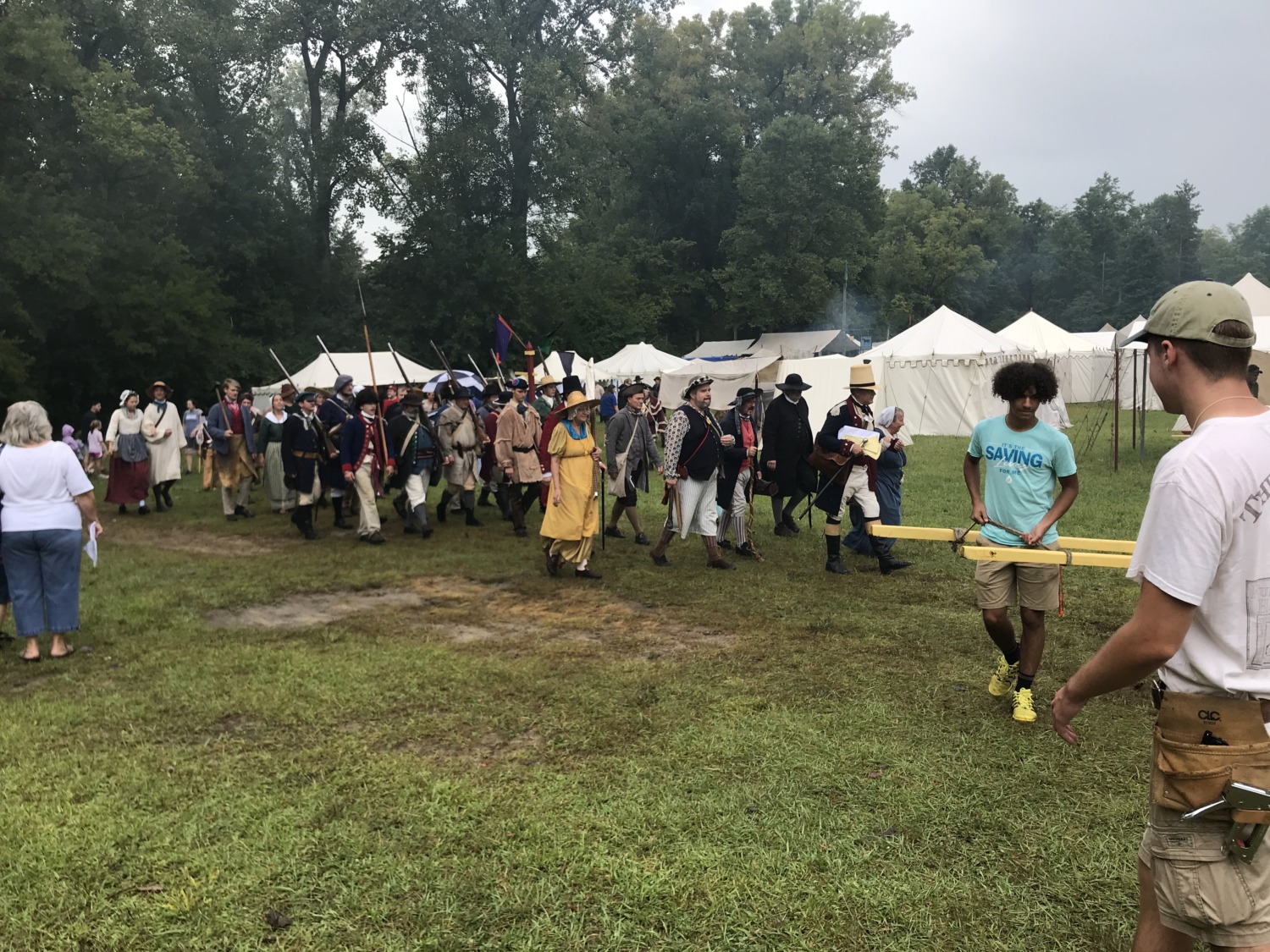
We listened to the “Master of the Fair” give out some awards. One award was to the only remaining founding member of the fair, who was 90 years old and had attended the fair every one of the 40 years. We listened to the speeches for a while and then wandered off to check out the booths
There were 85 food and craft booths. All of the artisans appeared to be extremely period appropriate. The Fair at New Boston is juried, which means that each booth and what they have in it must be approved. The George Rogers Clark only allows someone at the fair if they are historically accurate. We enjoyed looking at the booths and the wares that were offered for sale. None of the artisans are going to get rich off of us, however. We didn’t buy anything except food.
We watched the two blacksmiths for a while and talked to them about their forges. I spent a little time looking at the weavers’ booths. But I was looking mainly to see what they were selling and the prices they were selling them for. There were two weavers, spinners, and a woman dying. The dyer was using indigo in one vat and onion skins in another. Usually the best customers are these events are the living history people because they can always find something that will make their presentation more authentic. One man was handing over a hunting frock to the dyer so that she could make it blue.
We saw a coppersmith, tinsmith, and silversmith. The coppersmith, especially, had some beautiful items. They looked too pretty, however, to use. The blacksmith had several spider skillets on display but they were already sold. We looked at the food booths which were selling a variety of items. John and I both got some peaches and pound cake. Tom couldn’t decide between a scotch egg and sausage on a stick and he didn’t end up buying anything.
Around the edges of the fair were entertainment booths. The Cheapside Theater had a magic show, Dr. Balthazar, and some short skits. There was a Fairmasters Tent with different musicians and dancers through the day. The Hertzler Barn had talks by different historical characters. Lot 52 was Scoundrels Alley with a circus, swindlers, and canting.
We saw the livery stable and the barnyard. There was a military encampment and we watched a howitzer being fired. It was a British howitzer, and Tom asked about that. From 1790 to 1810, there were as many British as Americans in Ohio. Ohio was the edge of the frontier and it wasn’t until the War of 1812 that the British were driven out of the area. We also walked around the Native American Village of Piskopo. The George Rogers Clark Association built a small fort and recreated Native American homes in the park.

In the afternoon the fair had a reenactment of the Battle of Peckuwe (Piqua). The battle was part of the Revolutionary War and took place on August 8, 1780 at the Indian village of Peckuwe. The Kentucky militia led by General George Rogers Clark fought the Shawnee Indians under Chief Black Hoof. Although the Native Americans were driven off, Clark lost so many men that it was not considered a victory.
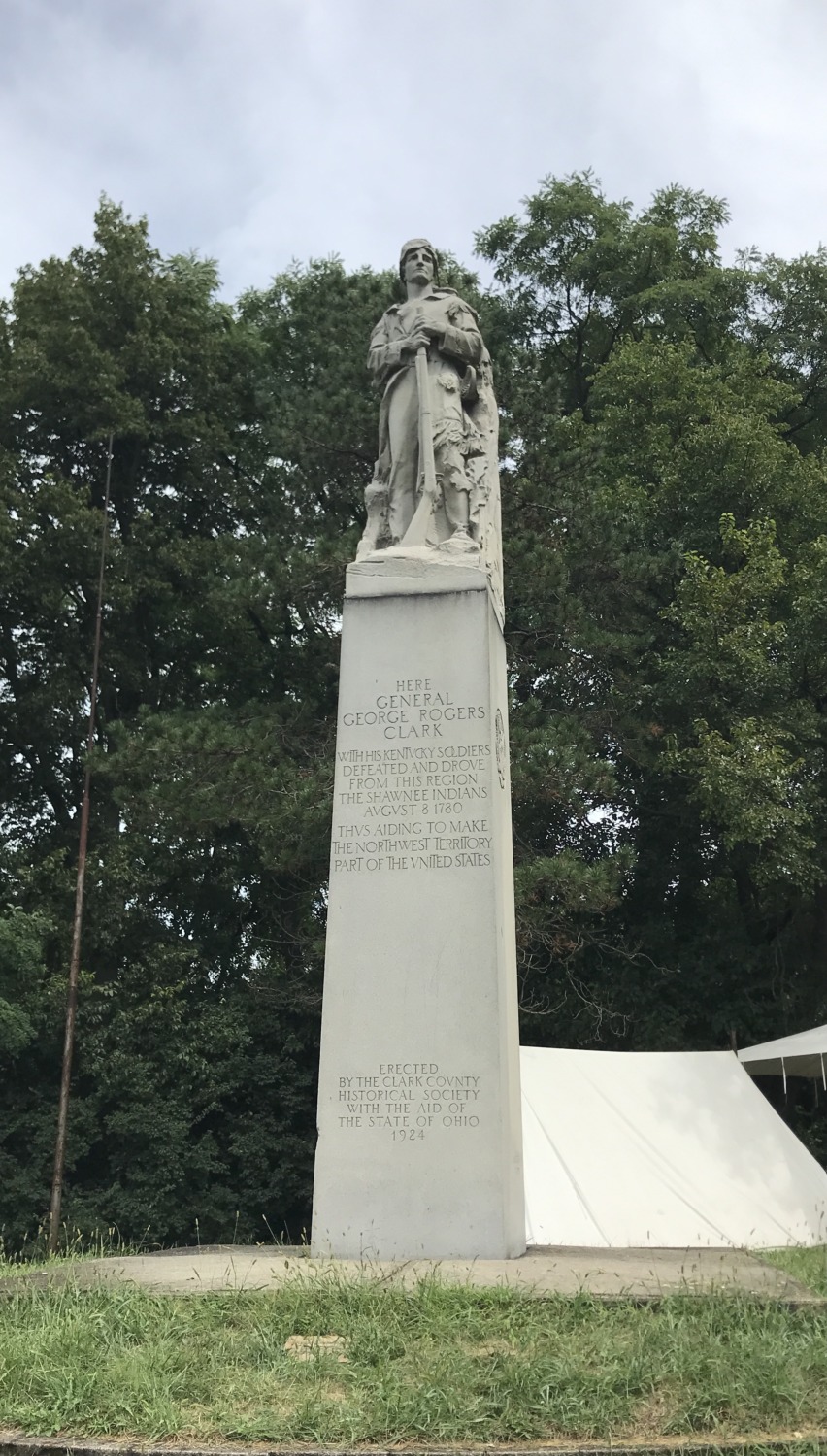
We could have spent the entire day at the fair, but it looked like our window for avoiding the rain was closing. We decided to head out of the park before the rain returned. On our way out of the park heard someone shout, “John Hartley!” We turned around and looked back and saw some friends. Who did we see and how did they change our plans? You will have to wait to read more about that next week.


